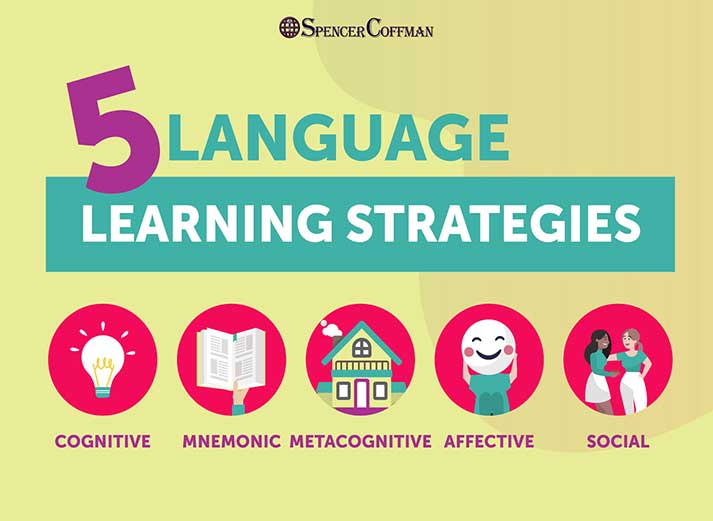Languages can be learned in any number of ways. If you have been following my blog then you are already familiar with the 5 Methods to Learn a Language article that I wrote. Check it out if you haven’t already.
In addition to those five methods, there are five great strategies that you can use to help learn a language. These strategies can be useful to know especially for students with different learning styles.
Cognitive – this strategy helps learners make and strengthen associations through the use of information that they already know. Learners are taught to correlate already known information with unknown information in order to learn the unknown information.
For example, students may guess from context, relate words to pictures, use deductive and inductive reasoning et cetera. The Rosetta Stone program is an excellent example of this strategy.
Mnemonic – this strategy helps learners learn new information by linking known information with new information using mnemonic devices. This is great for learners who like words and symbolism.
The popular ways to remember the names of the planets and great lakes are mnemonic devices. In language learning, students may memorize information through the use of acronyms, rhymes, songs, body movements, et cetera.
Metacognitive – this strategy helps learners to know exactly what they are doing. Metacognitive means beyond cognition and learners learn to manipulate their environment to enhance their learning experience. They begin to understand the learning process and the specific tasks that work for them.
They are taught to identify available resources and use them to their benefit, such as finding a quiet place, setting a schedule, et cetera. One example is that if a student knows flashcards work really well for him or her then he or she will use flashcards to learn new information.
Affective – this strategy focuses on the learner’s feelings and emotions. Students learn to recognize what forms of learning and material evoke particular emotions, such as anger or frustration. The student learns to recognize the presence of these emotions and, in doing so, might be able to control them and pursue the learning of new material.
Social – this strategy focuses on becoming involved with other people. It is the social aspect of learning and is a great strategy for extroverted individuals. Learners are encouraged to engage in peer activities, ask questions, have discussions, et cetera. In addition, students may learn and study together outside of class, in study hall, in learning groups, et cetera.
Knowing and understanding each of these strategies will help you both as a learner and a teacher. If you can recognize what strategy works best for you then your learning experience will be much more successful. In addition, if you can identify which strategy will work best for your students, then they will have a much better experience as well.
For more great information take a look at the supplemental content on this website and check out these great blog posts. In addition, feel free to connect with me on social media.





